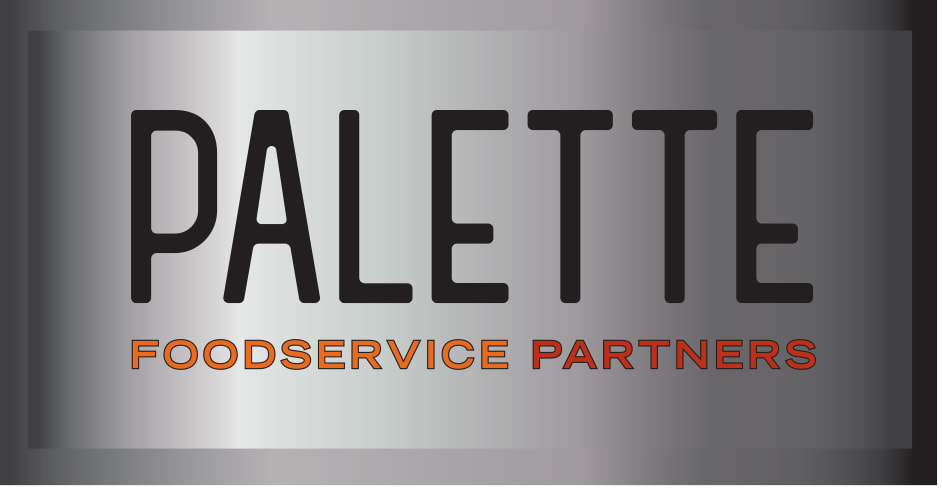 If your business is struggling with hiring and retaining staff, it may also be struggling to carry out food safety training – or to review any processes that don’t directly support your compliance with local and state regulations. But unfortunately, a restaurant may suffer for this in the long term if employees are injured on the job or if the business faces a steep insurance claim that could have been prevented by having a strong safety culture. Your restaurant’s commitment to safety should be so woven through its fabric that senior leaders talk about it regularly and every new hire is aware of your approach before they even start their job. To make it easier to share safety knowledge and encourage retention, automate what you can – through the use of video training, gamification and digital tools that guide staff through preparation tasks that protect safety. Then take steps to broaden the knowledge of your team through regular cross-training to help fill gaps. Give your more senior staff mentoring roles with newer staff. Above all, explain the why behind why you perform certain safety practices so that tasks are less likely to fall through the cracks as you manage the other demands of your business.  When the U.S. Centers for Disease Control (CDC) led a study investigating the various factors that contribute to the cross-contamination of food in restaurants, they found more frequent cases of contamination in businesses that were lacking food safety training and certification, as well as those without handwashing policies. Contamination risks were present in restaurants that didn’t require manager certification or train workers in food safety, for example. As for handwashing, the risk for contamination was greatest in restaurants that didn’t have policies detailing where, when and how often to wash hands, or on the need to minimize bare-hand contact with ready-to-eat foods. Unfortunately, 60 percent of the foodborne illness outbreaks reported to the CDC each year connect back to restaurants, so it’s worth zeroing in on these areas if improving food safety is on your list of priorities this year. Having a staff discussion about handwashing is something a restaurant manager can do right away to help lower a restaurant’s risks – particularly at a time when seasonal viruses are common.  Enhance your risk management culture Taking a more proactive approach to risk management in your business can save you significant money and time in the long run – helping you avoid costly insurance claims, repeat safety inspections, business interruptions and other drains on resources that you’d rather direct to improving your overall operation. Could risk management be woven into your culture more tightly this year? It can help to look across your operation to assess risks as diverse as your potential for equipment problems, food safety concerns and cybersecurity vulnerabilities. Connect your risks to daily tasks that help you identify and respond to problems. Assess where staff training is needed to reinforce the actions your business needs to take to manage these issues day to day. Then make it possible to track these actions – by tying each task to a person on staff and using automated dashboards and checklists that make it easy to monitor when jobs are completed and missed. To manage evolving risks to cybersecurity, conduct regular testing with the help of your vendor, limit system access to key personnel, and ensure you’re using protections such as multifactor authentication and encryption as additional data safeguards.  Making food safety lessons stick When you think back on the best teachers you had when you were in school, they most likely weren’t the ones who talked at you during class, expecting you to soak up everything they said or assigned homework. Yet this is how food safety training goes in many organizations. Making these lessons take hold in the minds of employees calls for a different approach. In a recent podcast discussion, Adam Spach (founder of KAS Concepts, the home of No Boring Training) and food safety experts Matthew Regusci and Francine Shaw covered what tends to make food safety training sessions more effective in getting through to participants. Of course, it’s important to teach people the right steps to take to protect safety – but just as important are the why and the how behind the actions. For example, why is it important to take the temperature of a food? Well, a person could end up in the hospital if they eat food that hasn’t been thoroughly cooked. The restaurant could even go out of business. To illustrate this, you can share some real-life examples of when this has happened for restaurants. Attaching specific stories to lessons can help them sink in – there are plenty of them available on sites such as stopfoodborneillness.org. Shaw also suggested adjusting how content is shared, encouraging the use of mnemonic devices to help people make associations to food safety knowledge. For example, you might help people remember that poultry needs to be cooked to the highest temperature as compared to other animal proteins by saying that “birds fly high.” Above all, it’s important to make food safety training feel less like a lesson and more like a conversation. It helps to encourage food safety discussion not only in classroom settings, but also in team huddles and one-on-one meetings. This can also encourage people to share their own examples of things they have seen on the job that may serve as learning opportunities for others.  If your restaurant’s food safety culture is strong, you will likely see benefits in other areas – like an improved P&L, lower employee turnover, and enhanced guest experience and loyalty. But sometimes it’s difficult to maintain a commitment to food safety across a fast-paced organization where new people are regularly coming on board. Having a few elements in place can help you cement your food safety culture across your business: First, leaders can set the right tone by clarifying expectations and weaving the benefits of food safety into regular conversations with employees and vendors across functions. Second, training can demonstrate the “why” behind required tasks, whether it has to do with the wearing of gloves or the use of a certain cutting board for a food prep task. When people know what can happen if they don’t follow a procedure, they are more apt to see its importance. Finally, bring some humility and positivity to the training process: It can be nerve-wracking to have someone watch you perform a task and then correct your mistakes, but it can help when the trainer admits when they don’t know things or aren’t sure, points out the areas where the person is performing well, and treats the identification of mistakes as progress. After all, you’re simply working together to help your organization be the best it can be.  Data from Travelers insurance company found that first-year employees are at greatest risk of workplace injuries – and the restaurant industry generates the most insurance claims from first-year employees than any other industry. The research indicates that more than half of restaurant claims involved their newest workers and represented 47 percent of total claim costs. The most common causes of these injuries were overexertion, along with slips, trips and falls. With that in mind, how might you enhance your training to help new staff avoid these hazards? Showing your team how to avoid injuries that result from simple overexertion can be an easy win. Do your newest team members know how to safely carry and move loads of any size, as well as how to move through the restaurant in ways that don’t cause unnecessary strain and can lead to injury?  In a recent webinar about the return on investment of food safety programs, leaders from Steritech shared some telling research from the USDA. The research emphasized how important it is to not only have a strong food safety program, but also to combine it with managers who can discuss it knowledgeably. Specifically, it found that quick-service restaurants that lacked this combination generated 4.7 high-risk violations on average per inspection, compared to 1.7 violations for those that had a strong program and knowledgeable managers. Making this connection turned out to be a strong predictor of food safety success in these restaurants. If your food safety is lagging in certain areas, could it help to connect the dots between your program and the managers in charge of overseeing it?  The connection is clear: In Steritech’s assessment of thousands of food safety inspection results across quick-service, fast-casual and casual restaurants this year, the restaurants struggling with safety violations often have training issues. More than budget and labor challenges, inadequate or improper training is likely to cause these violations. But consider this good news – or at least an indication of a problem within your control. In your training program, are you prioritizing your biggest areas of risk, not weighing staff down with less-important facts? Are you focusing on the “why” behind your training so staff can easily make the connection between their work and protecting people’s health? Is there common sense behind each lesson so your team understands the context around the training? Does your training account for different learning needs and styles? Have you made your expectations clear? Are you taking steps to make your training engaging and motivating for staff? Build in checkpoints and rewards based on performance – and look for other ways to evolve your training based on what’s working well and what’s not.  In an environment where so many employees are new, it can be easy for people to look to others to manage food safety tasks. But in reality, it needs to be part of everyone’s job description. Does everyone on your team take ownership of it? In a recent report in Modern Restaurant Management, food safety expert Francine Shaw advises operators to support food safety through regular evaluations, internal audits and performance reviews. Make sure your staff have feedback mechanisms to report issues too. This can help you identify problems and stop them in their tracks, prompt some (non-punitive) corrective training on the spot, and also give you an opportunity to recognize and reward staff who consistently demonstrate a commitment to protecting food safety. When your team sees that their food safety efforts are valuable – to you and to them – you’ll be able to weave them into your restaurant’s culture.  September is Food Safety Education Month. Use the occasion to reinforce key messages in your food safety training, bring some additional focus to areas you need to improve, and use quizzes, contests and rewards to make this month’s training something that staff will remember and enjoy. It’s chance for you to reset your connection with your team: Research published by QSR Magazine found that nearly 70 percent of restaurant employees feel like they don’t receive enough hands-on training from their managers. This, in turn, can make it difficult for staff to develop skills needed to perform tasks correctly and safely, which often leads to a loss of interest in their roles. Try providing some extra safety training over the course of the month and watch for any resulting changes in employee engagement. |
subscribe to our newsletterArchives
April 2024
Categories
All
|



 RSS Feed
RSS Feed